Analysis and Research on Temporal and Spatial Variation of Color Steel Tile Roof of Munyaka Region in Kenya, Africa
Abstract
:1. Introduction
2. Study Area and Data
2.1. The Study Area
2.2. Data
3. Methods and Materials
3.1. Characteristic Analysis
3.1.1. Spectral Characteristics
3.1.2. Analysis of Index Characteristics
- (1)
- Normalized Difference Vegetation Index (NDVI)
- (2)
- Normalized Difference Build Index (NDBI)
- (3)
- Normalized Difference Surface Index (NDSI)
3.1.3. Texture Features
3.2. Construction of CSTR Extraction Model
4. Results
4.1. Classification and Analysis of Ground
4.2. Analysis and Verification
5. Discussion
5.1. Evaluation of Research Results
5.2. Monitoring of Changes in Economic Development
5.3. Application Analysis of Research Results
6. Conclusions
- (1)
- In this paper, we built a multifeature decision tree extraction model, combined multiple exponential features and second-order matrix texture features, and used DTM to set the corresponding threshold, which can better avoid the impact of other ground objects when extracting CSTR. The accuracy of the research results were evaluated using the confusion matrix. After calculation, the Kappa coefficient of the model is 0.9223, and the user accuracy and mapping accuracy both exceed 90%.
- (2)
- The CSTR information in 2016, 2018, and 2020 was extracted using the method in this paper, and the temporal and spatial change rule of CSTR in 2016–2020 was studied. The change characteristics were analyzed using the two indicators of annual growth AI and annual growth ARG.
- (3)
- According to the Eldoret municipal road construction, two years before the completion of the road infrastructure construction, the area growth rate of CSTR was 3.47%. Two years after the construction of road infrastructure, the growth rate of CSTR area reached 7.29%, about 2.1 times that before the completion of the road. The construction of municipal road infrastructure has a positive impact on the change of the living environment of African residents.
Author Contributions
Funding
Institutional Review Board Statement
Informed Consent Statement
Data Availability Statement
Conflicts of Interest
References
- Xian, Z.; Ba, Y.; Cheng, J. Study on the relationship between the indicators and policies of the UN 2030 sustainable development goals. Stat. Res. 2021, 38, 4–14. [Google Scholar]
- Stothers, L.; Macnab, A.; Bajunirwe, F.; Mutabazi, S.; Berkowitz, J. Associations between the severity of obstructive lowe rurinary tract symptoms and care-seeking behavior in rural Africa: A cross-sectional survey from Uganda. PLoS ONE 2017, 12, e0173631. [Google Scholar] [CrossRef] [PubMed] [Green Version]
- Yan, L. History and current situation of poverty in Africa. J. Xinzhou Norm. Univ. 2012, 28, 93–98. [Google Scholar]
- Ya, Z.; Pei, K. Factors Influencing Agricultural Products Trade between China and Africa. Sustainability 2022, 14, 5589. [Google Scholar] [CrossRef]
- Liu, X. Research on the impact of transportation infrastructure on regional economy. Economist 2021, 138–139. [Google Scholar]
- Charalampidis, I.; Karkatsoulis, P.; Capros, P. A Regional Economy-Energy-Transport Model of the EU for Assessing Decarbonization in Transport. Energies 2019, 12, 3128. [Google Scholar] [CrossRef] [Green Version]
- Prus, P.; Sikora, M. The Impact of Transport Infrastructure on the Sustainable Development of the Region—Case Study. Agriculture 2021, 11, 279. [Google Scholar] [CrossRef]
- Yu, Y.; Wang, S.; Wang, B. Hierarchical extraction of buildings from high resolution remote sensing images. J. Remote Sens. 2019, 23, 125–136. [Google Scholar]
- Wang, X.; Yan, H.; Zhou, L. Using SVM classify Landsat image to analyze the spatial and temporal characteristics of main urban expansion analysis in Democratic People’s Republic of Korea. Remote Sens. Land Resour. 2020, 32, 163–171. [Google Scholar]
- Lin, Y.; Zhang, B.; Wang, D.; Chen, X.; Xu, J. Hierarchical extraction of high-resolution remote sensing image buildings based on multi feature fusion. Chin. J. Image Graph. 2017, 22, 1798–1808. [Google Scholar]
- Shackelford, A.K. Combined Fuzzy Pixel-Based and Object-Based Approach for Classification of High-Resolution Multispectral Data Over Urban Areas. IEEE Trans. Geosci. Remote Sens. 2003, 41, 2354–2363. [Google Scholar] [CrossRef] [Green Version]
- Wang, X.; Li, P.; Jiang, S. Building extraction using airborne LiDAR data and very high resolution imagery over a complex urban area. Remote Sens. Land Resour. 2016, 28, 106–111. [Google Scholar]
- Zhang, H.; Zhao, Y.; Chen, G. Remote Sensing Image Building Recognition and Classification Based on the Support Vector Machine. Geol. Sci. Technol. Inf. 2016, 8, 4634–4646. [Google Scholar]
- Li, P.; Yang, S.; Yao, H. Extraction of urban color steel shed based on high resolution remote sensing image. Geospat. Inf. 2017, 15, 13–15. [Google Scholar]
- Ma, J.; Yang, S.; Jia, X. Temporal and spatial change of color steel sheds in Anning district of Lanzhou city. Sci. Surv. Mapp. 2018, 43, 34–37. [Google Scholar]
- Drusch, M.; Bello, U.D.; Carlier, S. Sentinel-2 optical high resolution mission for GMES land operational services. Remote Sens. Environ. 2012, 120, 25–36. [Google Scholar] [CrossRef]
- Zhang, W.; Liu, H.; Wu, W. Classification of Land Use in Low Mountain and Hilly Area Based on Random Forest and Sentinel-2 Satellite Data:A Case Study of Lishi Town, Jiangjin, Chongqing. Resour. Environ. Yangtze Basin 2019, 28, 1334–1343. [Google Scholar]
- Baillarin, S.; Meygret, A.; Dechoz, C.; Petrucci, B.; Lacherade, S.; Tremas, T.; Isola, C.; Martimort, P.; Spoto, F. Sentinel-2 level 1 products and image processing performances. In Proceedings of the IEEE International Geoscience and Remote Sensing Symposium, Munich, Germany, 22–27 July 2012; pp. 7003–7006. [Google Scholar] [CrossRef] [Green Version]
- Su, W.; Zhang, M.; Jiang, K. Atmospheric Correction Method for Sentinel-2 Satellite Imagery. Acta Optica Sinica 2018, 38, 322–331. [Google Scholar]
- Zheng, C.; Wang, X.; Huang, J. Mapping paddy rice planting area in Zhejiang Province using multi-temporal MODIS images. J. Zhejiang Univ. Agric. Life Sci. 2009, 35, 98–104. [Google Scholar]
- Friedl, M.; Brodley, C. Decision Tree classification of land cover from remotely sensed data. Remote Sens. Environ. 1997, 61, 399–409. [Google Scholar] [CrossRef]
- Conrad, C.; Colditz, R.; Dech, S. Temporal segmentation of MODIS time series for improving crop classification in Central Asian irrigation systems. Int. J. Remote Sens. 2011, 32, 8763–8778. [Google Scholar] [CrossRef]
- Rouse, J. Monitoring Vegetation Systems in the Great Plains with Erts. In Proceedings of the Third ERTS Symposium, Washington, DC, USA, 10–14 December 1973. [Google Scholar]
- Zhen, J.; Chen, Y. Vegetation Indices and the Applications in Monitoring Tillage Reverting to Woodland or Grassland Ecosystems. Remote Sens. Technol. Appl. 2006, 21, 41–48. [Google Scholar]
- Chen, X.; Zhao, J.; Chen, L. Land Cover Classification and Change Analysis of Hongta District in Yuxi City Based on Landsat Image. Forest Eng. 2019, 35, 5–12. [Google Scholar]
- Cha, Y.; Ni, S.; Yang, S. An Effective Approach to Automatically Extract Urban Land-use from TM Imagery. J. Remote Sens. 2003, 7, 37–40. [Google Scholar]
- Yu, J. Research on Information Extraction of Agricultural Greenhouse Based on Sentinel Cart Decision Tree; Liaoning Normal University: Dalian, China, 2020; pp. 50–70. [Google Scholar]
- Lu, Z.; Xu, F.; Luo, M. Characteristic analysis of lodging rice and study of the multi-spectral remote sensing extraction method. Chin. J. Eco-Agric. 2021, 29, 751–761. [Google Scholar]
- Li, Z.; Chen, Z.; Wang, L. Area extraction of maize lodging based on remote sensing by small unmanned aerial vehicle. Chin. J. Eco-Agric. 2014, 30, 207–213. [Google Scholar]
- Guan, X.; Fang, C.; Zhou, M. Spatial and Temporal Characteristics of Spatial Expansion of Urban Land in Wuhan Urban Agglomeration. J. Nat. Resour. 2012, 27, 1447–1459. [Google Scholar]
- Yu, S.; Sun, Z.; Guo, H. Monitoring and analyzing the spatial dynamics and patterns of megacities along the Maritime Silk Road. J. Remote Sens. 2017, 21, 169–181. [Google Scholar]
- Guo, Z.; Chen, S.; Yao, S.; Xiong, C. Analysis on traffic dominance and its spatial differentiation pattern in Kenya. Geogr. Sci. 2020, 40, 956–964. [Google Scholar] [CrossRef]
- Wang, P. Analysis on construction management experience of Kenya municipal road engineering. Fujian Archit. 2021, 2021, 159–162. [Google Scholar]
- Rose, C.; Joel, O.; Andy, S.; Phil, J. Imagining urban transformation in Kenya. Environ. Sci. Policy 2022, 135, 86–95. [Google Scholar] [CrossRef]
- Wei, S. The agricultural trade between China and “One belt, one road” countries: Network structure, association characteristics and strategy choice. Agric. Econ. Probl. 2018, 11, 101–113. [Google Scholar]
- Kenya Ministry of Health. Task Sharing Policy Guidelines 2017–2030: Expanding Access to Quality Health Services through Task Sharing; Kenya Ministry of Health: Nairobi, Kenya, 2017.
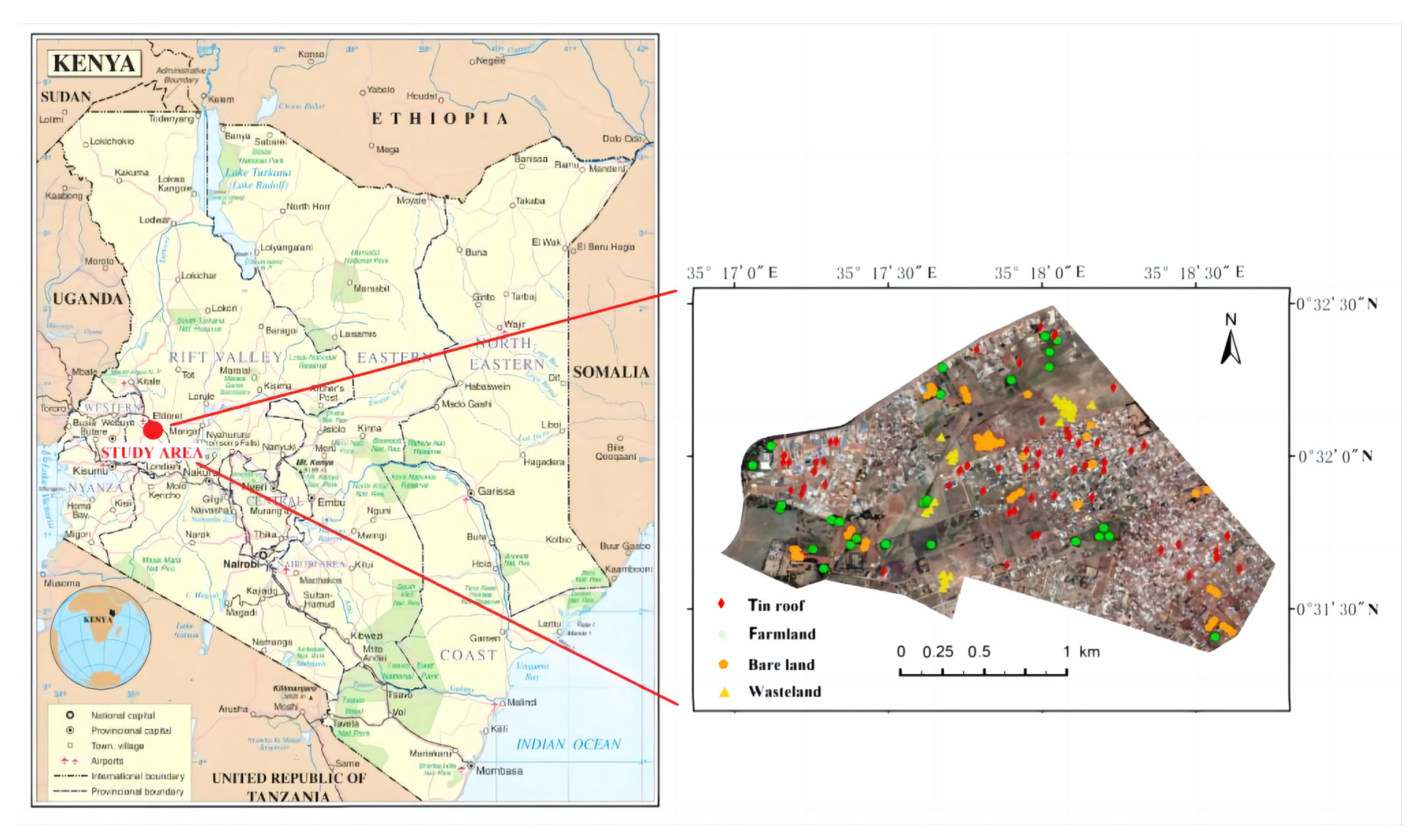
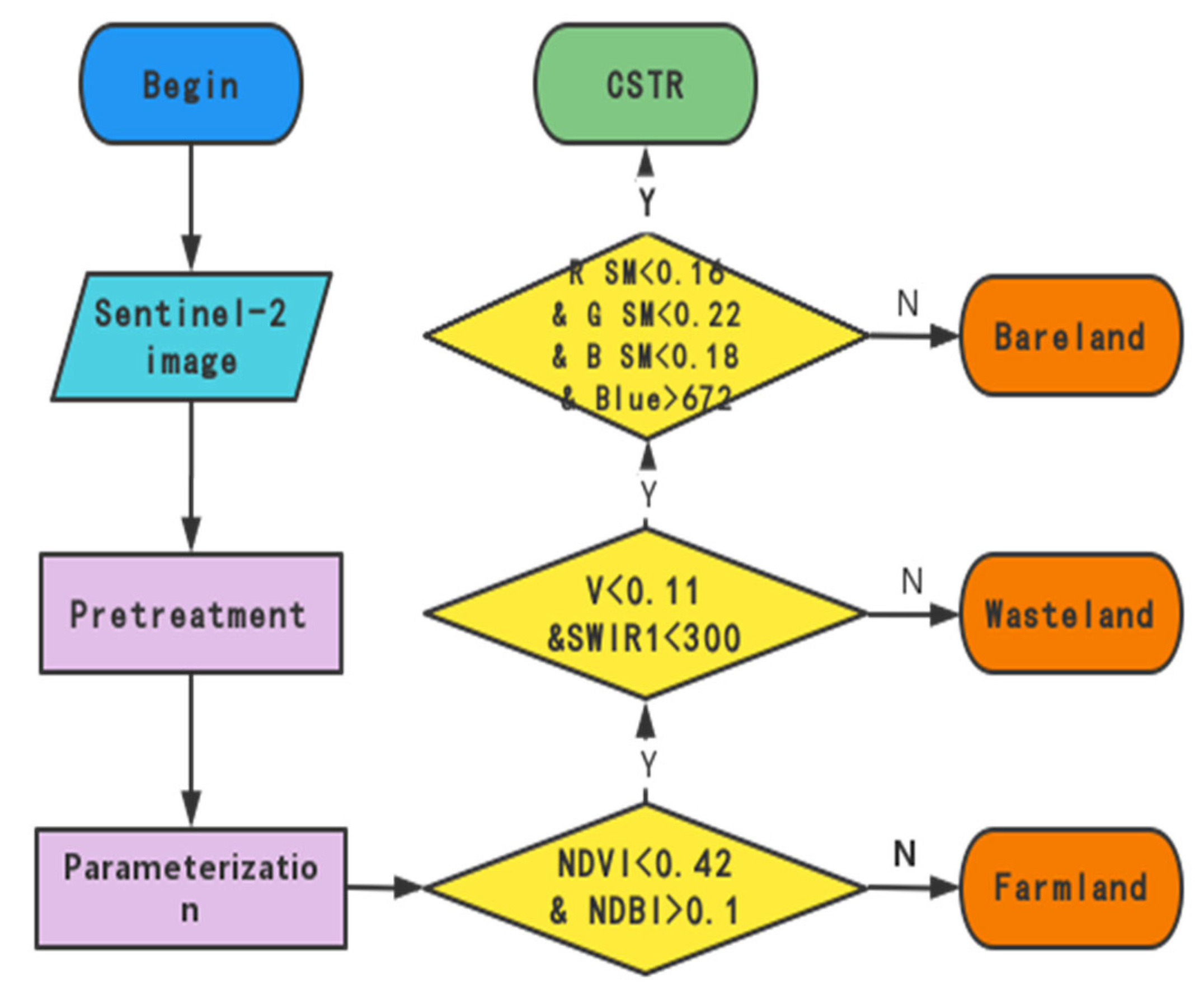
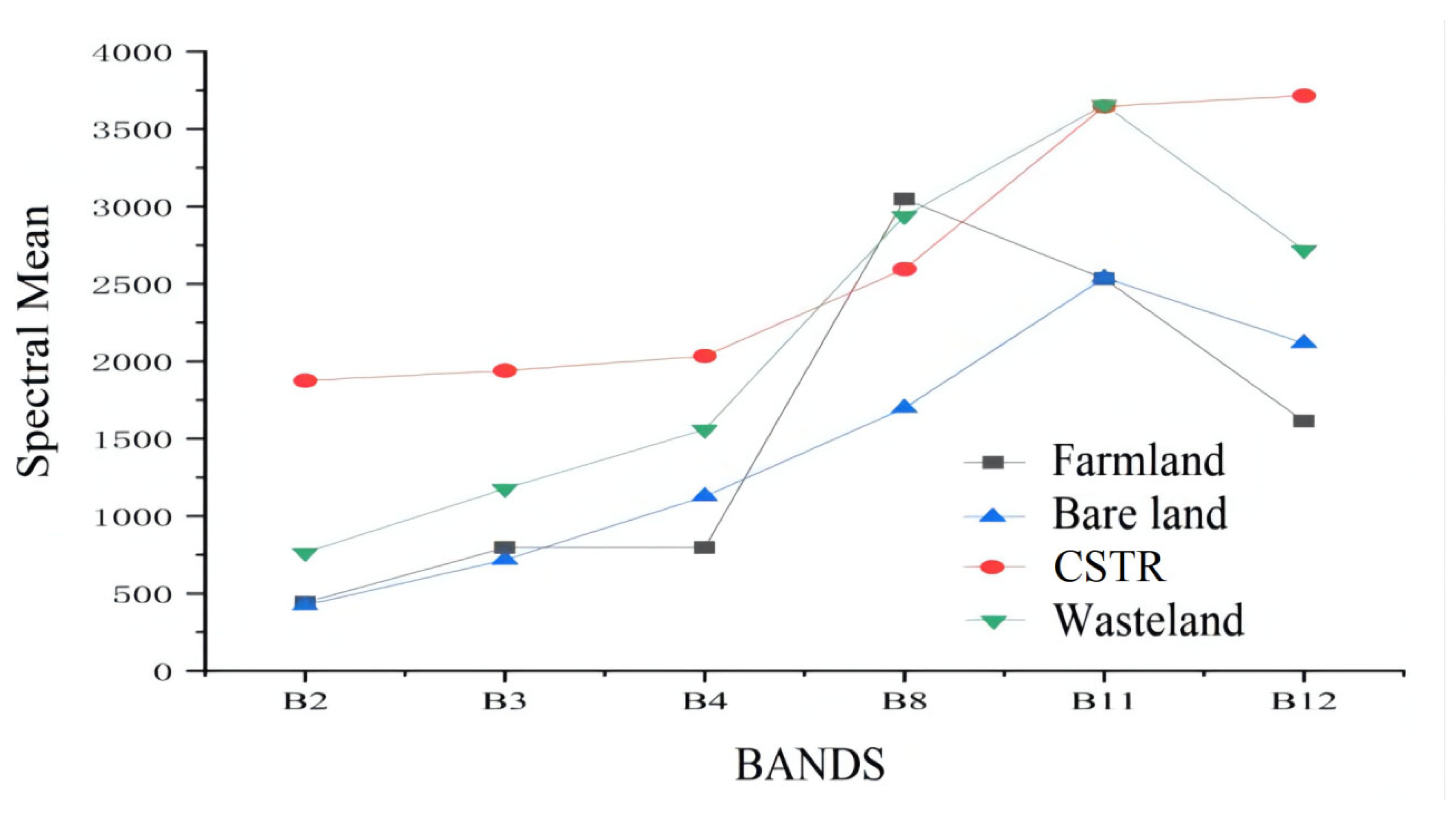

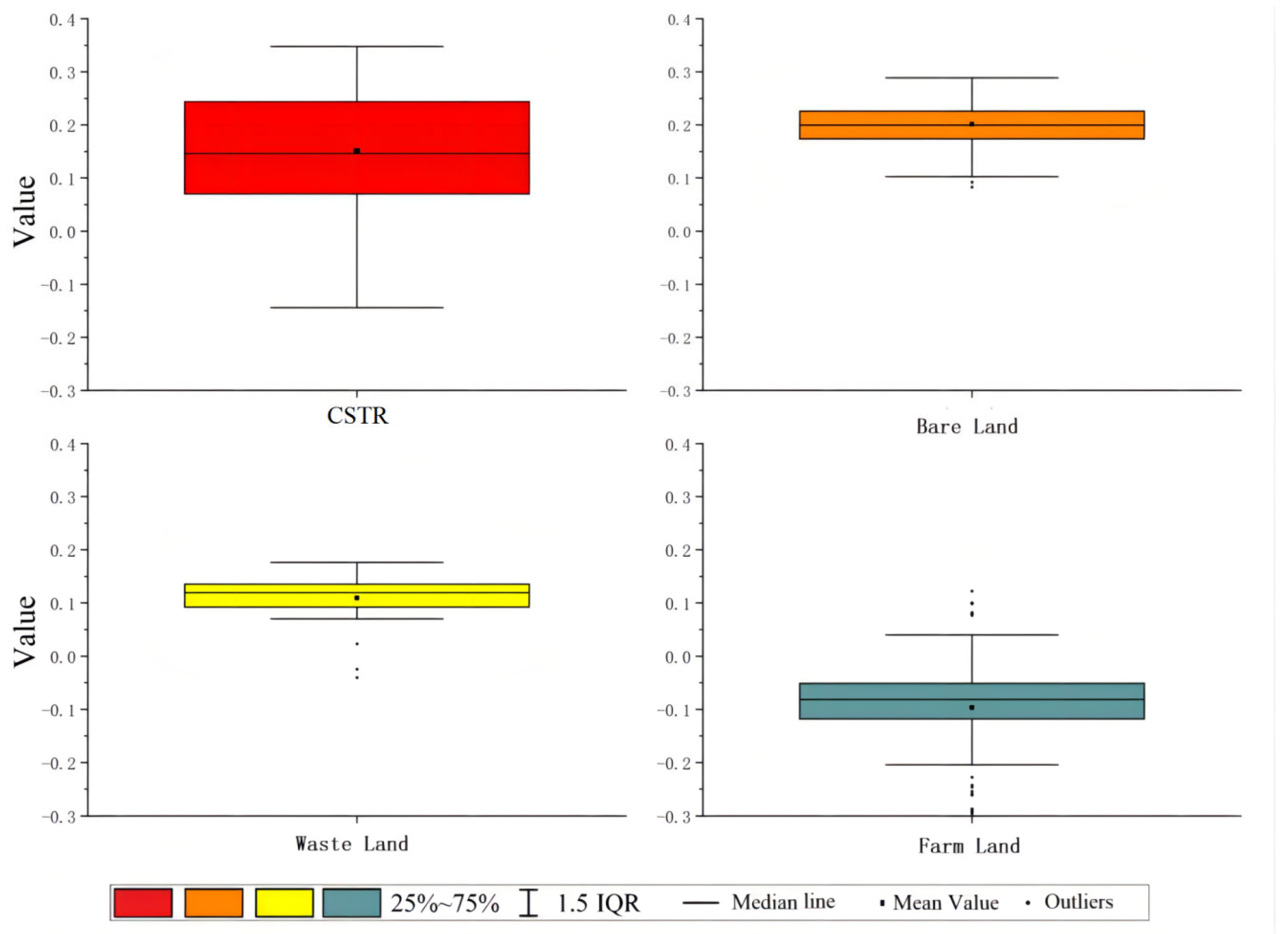
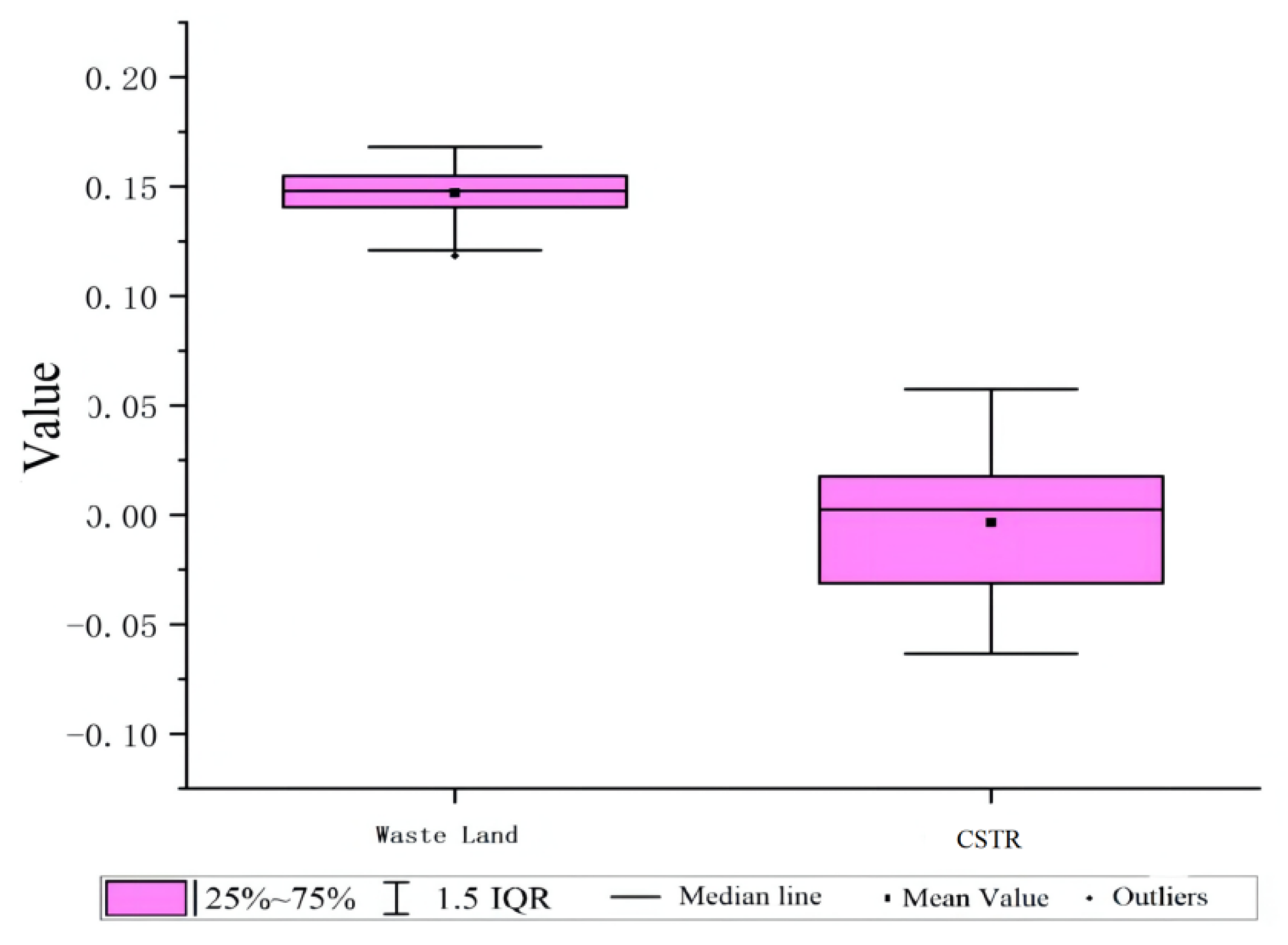
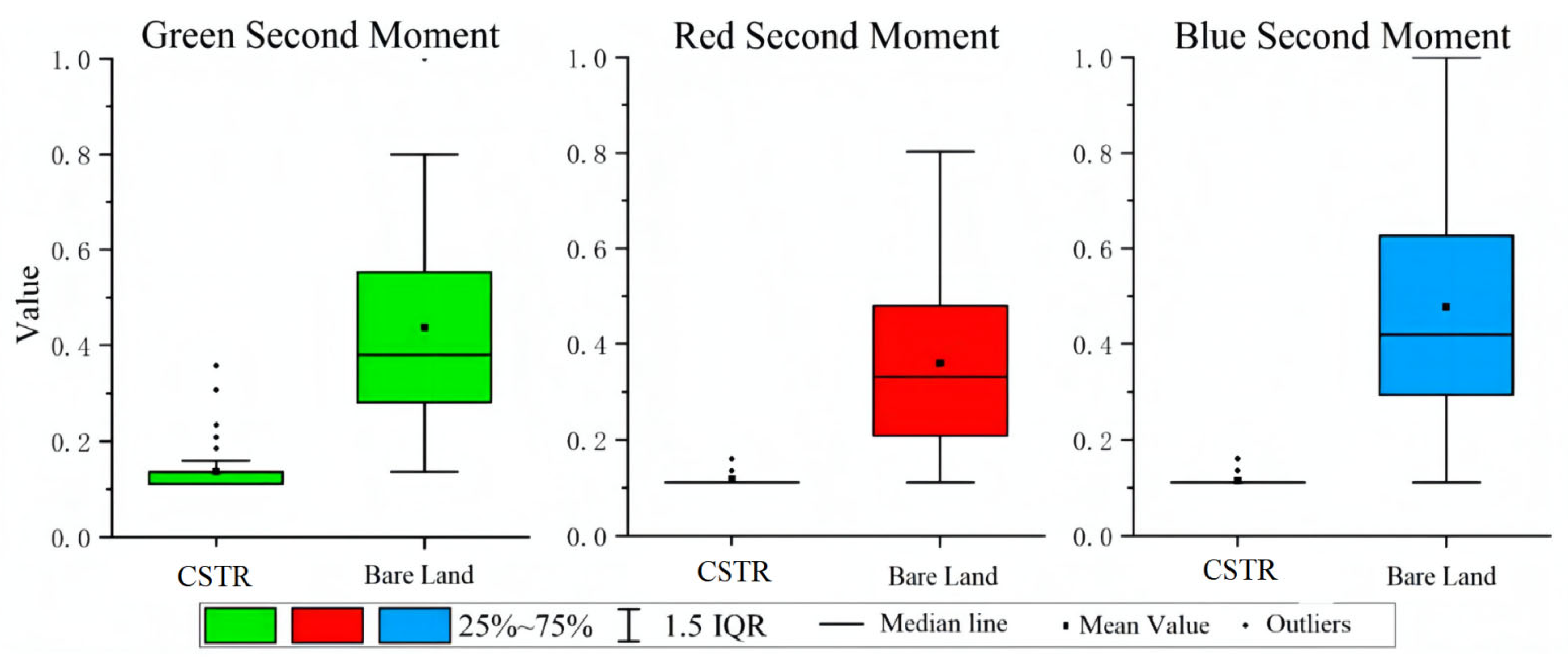
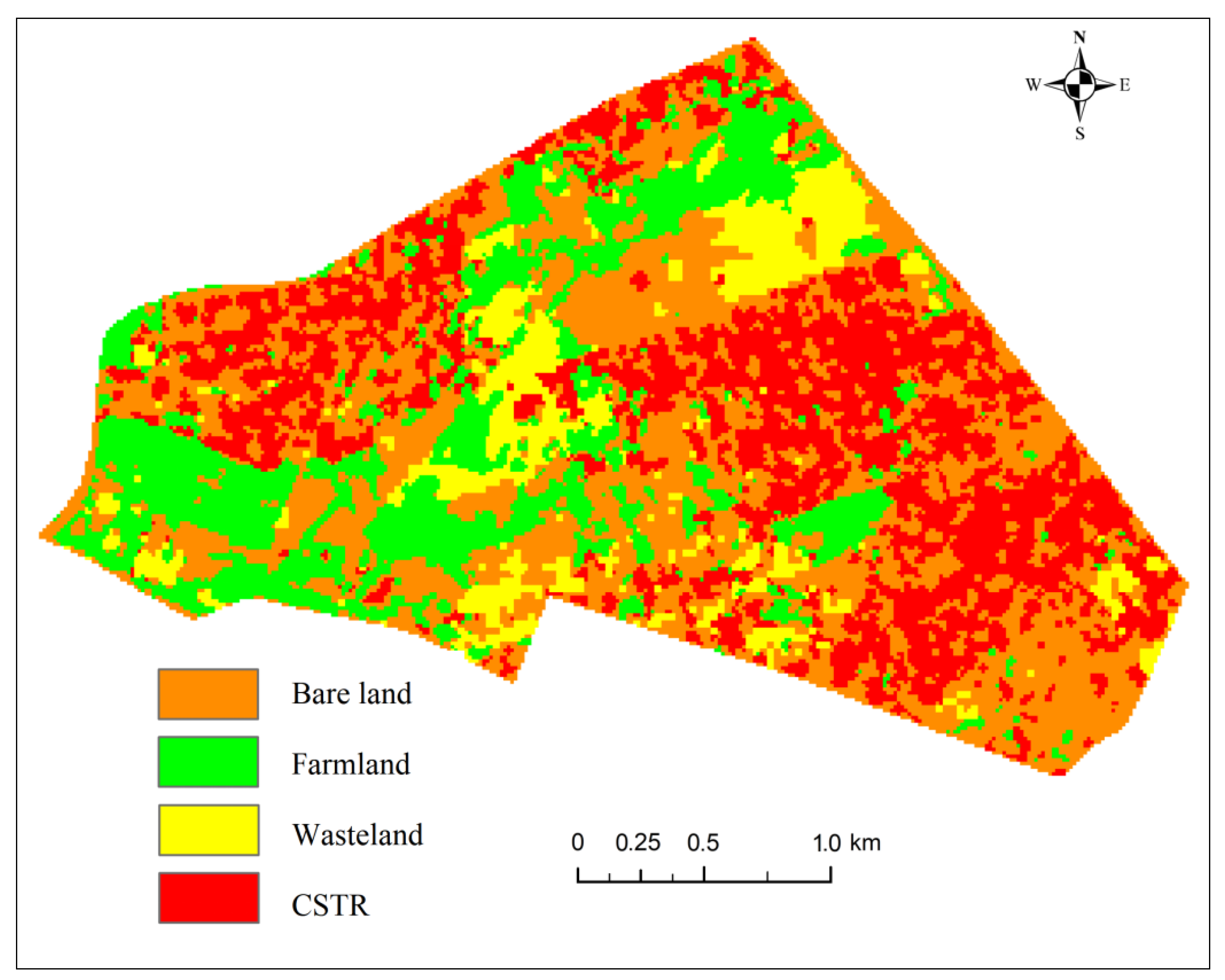



| Bands | Bands Information | Central Wavelength(/μm) | Resolution(/m) |
|---|---|---|---|
| Band 1 | Coastal Aerosol | 0.443 | 60 |
| Band 2 | Blue | 0.490 | 10 |
| Band 3 | Green | 0.560 | 10 |
| Band 4 | Red | 0.665 | 10 |
| Band 5 | Vegetation Red Edge | 0.705 | 20 |
| Band 6 | Vegetation Red Edge | 0.740 | 20 |
| Band 7 | Vegetation Red Edge | 0.783 | 20 |
| Band 8 | Near-Infrared (NIR) | 0.842 | 10 |
| Band 8A | Vegetation Red Edge | 0.865 | 20 |
| Band 9 | Water Vapor | 0.945 | 60 |
| Band10 | Short-Wave Infrared (SWIR)–Cirrus | 1.375 | 60 |
| Band 11 | SWIR1 | 1.610 | 20 |
| Band 12 | SWIR2 | 2.190 | 20 |
| Index | CSTR | Bare land | RD % | ||||
|---|---|---|---|---|---|---|---|
| Mean Value | Variance | CV % | Mean Value | Variance | CV % | ||
| B Homogeneity | 0.7997 | 0.0261 | 3.2698 | 0.1584 | 0.0100 | 6.3116 | 404.75 |
| B Second Moment | 0.4794 | 0.0596 | 12.4388 | 0.1159 | 0.0001 | 0.1251 | 313.52 |
| G Homogeneity | 0.7745 | 0.0233 | 3.0137 | 0.2227 | 0.0261 | 11.7326 | 247.71 |
| G Second Moment | 0.4393 | 0.0457 | 10.3968 | 0.1352 | 0.0025 | 0.8633 | 225.05 |
| R Second Moment | 0.3610 | 0.0332 | 9.1904 | 0.1182 | 0.0002 | 0.2017 | 205.51 |
| SWIR 2 Correlation | 0.3372 | 0.1112 | 32.9807 | 0.1162 | 0.0961 | 82.7189 | 190.10 |
| NI Second Moment | 0.3184 | 0.0309 | 9.7056 | 0.1249 | 0.0007 | 0.5715 | 154.95 |
| SWIR 2 Second Moment | 0.3461 | 0.0428 | 12.3656 | 0.1380 | 0.0029 | 2.1173 | 150.72 |
| SWIR 1 Homogeneity | 0.3191 | 0.0884 | 27.7057 | 0.1333 | 0.0898 | 67.3718 | 139.44 |
| Interference Features | Characteristic Threshold |
|---|---|
| Farmland | NDVI > 0.42 AND NDBI < 0.1 |
| Wasteland | V > 0.11 AND SWIR1 > 3000 |
| Bare land | R Second moment < 0.16 AND G Second moment < 0.22 AND B Second moment < 0.18 AND Blue > 672 |
| Period | Initial Area (/km2) | Final Area (/km2) | Changed (/km2) | AI (/km2) | AGR (%) |
|---|---|---|---|---|---|
| 2016–2018 | 0.5610 | 0.6006 | 0.0396 | 0.0198 | 3.4692 |
| 2018–2020 | 0.6006 | 0.6914 | 0.0914 | 0.0454 | 7.2931 |
Publisher’s Note: MDPI stays neutral with regard to jurisdictional claims in published maps and institutional affiliations. |
© 2022 by the authors. Licensee MDPI, Basel, Switzerland. This article is an open access article distributed under the terms and conditions of the Creative Commons Attribution (CC BY) license (https://creativecommons.org/licenses/by/4.0/).
Share and Cite
Zhang, W.; Liu, G.; Ding, L.; Du, M.; Yang, S. Analysis and Research on Temporal and Spatial Variation of Color Steel Tile Roof of Munyaka Region in Kenya, Africa. Sustainability 2022, 14, 14886. https://doi.org/10.3390/su142214886
Zhang W, Liu G, Ding L, Du M, Yang S. Analysis and Research on Temporal and Spatial Variation of Color Steel Tile Roof of Munyaka Region in Kenya, Africa. Sustainability. 2022; 14(22):14886. https://doi.org/10.3390/su142214886
Chicago/Turabian StyleZhang, Wenzhi, Gunangchun Liu, Laizhong Ding, Menghao Du, and Sen Yang. 2022. "Analysis and Research on Temporal and Spatial Variation of Color Steel Tile Roof of Munyaka Region in Kenya, Africa" Sustainability 14, no. 22: 14886. https://doi.org/10.3390/su142214886







